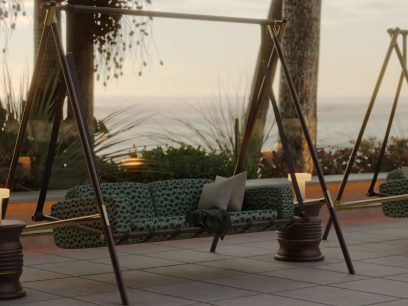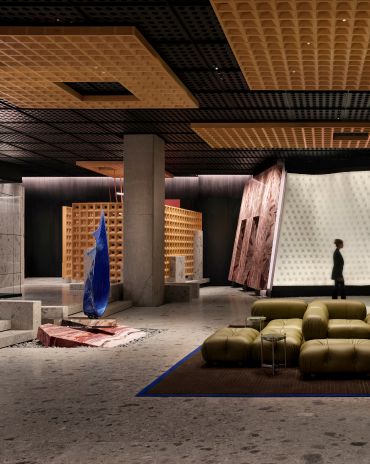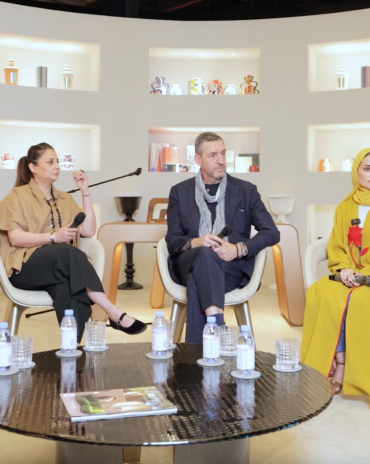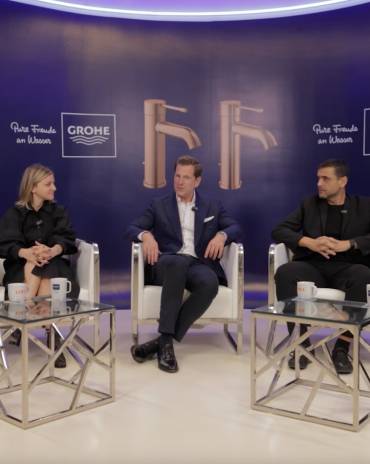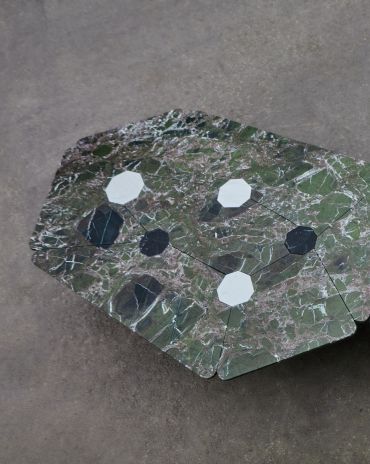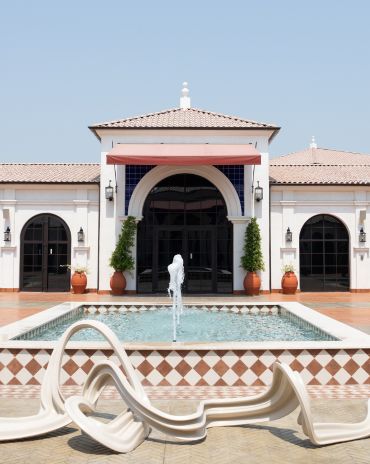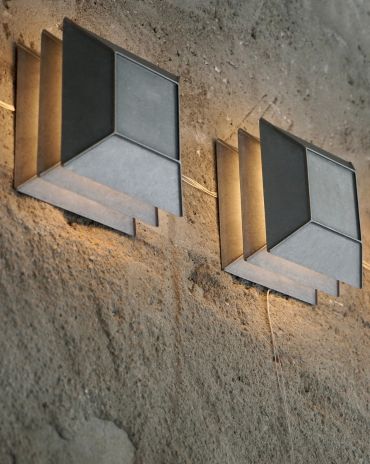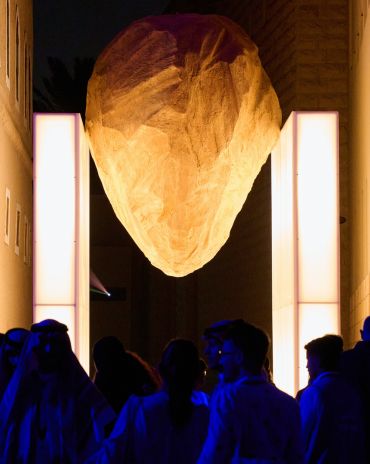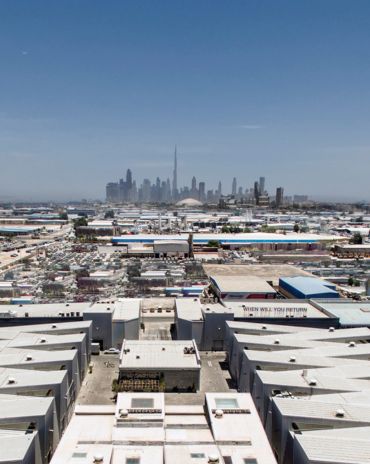Copyright © 2025 Motivate Media Group. All rights reserved.
Revitalising the Soul of the City
E+A Studio adds a fresh new spin to the charm of Dubai’s busiest neighbourhoods
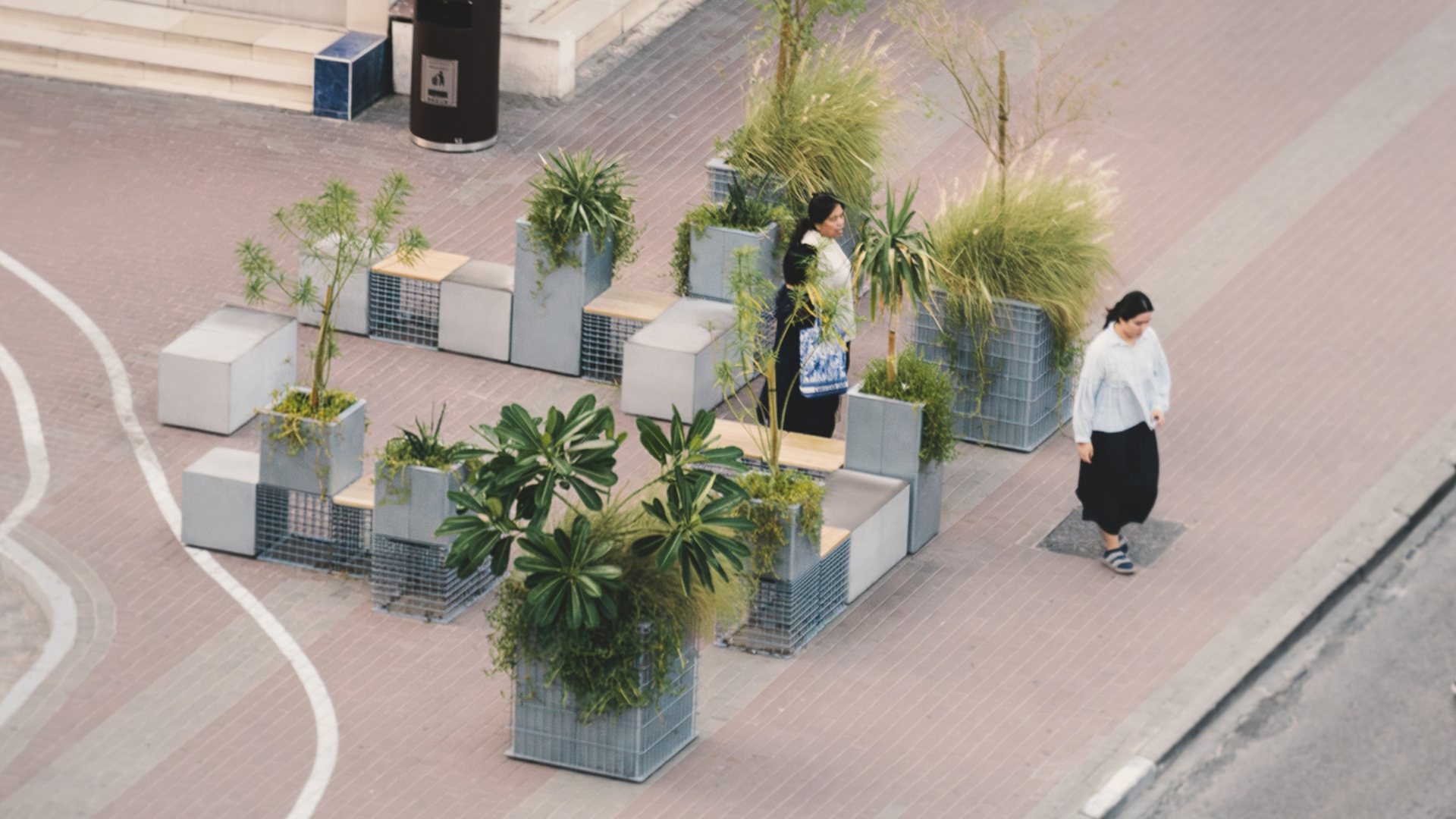

The firm decided to go against the flow with sleek, minimal design features and a neutral palette with pops of colour only for the festoon-like shading elements that frame the streets
As part of the Urban Beautification project commissioned by Dubai Creative Unit, E+A Studio worked hand in hand with Dubai Municipality and RTA to enhance the Satwa neighbourhood for residents and tourists alike. An initiative supported by Crown Prince H.H. Sheikh Hamdan bin Mohammed bin Rashid Al Maktoum, Dubai Creative Unit is a collective with a mission to enrich the urban landscape of Dubai’s older settlements and improve the experiences of its residents and visitors, while the Satwa project is among the first of its kind to be rolled out in the city. Well known for being one of the most vibrant neighbourhoods in Dubai, Satwa has always been treasured for its unique character, as well as its pocket-friendly eateries, street art, tailor shops and bargain stores.
With a history that dates back to the late 1960s when the first low-rise buildings were built, the locality has shifted significantly in terms of demographics over the last five decades, from a quiet Emirati suburb to a burgeoning neighbourhood dominated by expatriates from India, Pakistan, Bangladesh and the Philippines. By the 2000s, Satwa had become overpopulated, leading to the start of the area’s urban re-planning in 2007. Uncharacteristically for Dubai, this was met with creative protests by artists – including writer and filmmaker Mahmoud Kaabour with his multi-disciplinary project Satwa Stories, and Memories of Satwa by Gulf Photo Plus. These works have served to commemorate the hidden gems and iconic character of the neighbourhood, which is now on the brink of gentrification. The financial recession in 2008 unexpectedly brought the redevelopment plans to a halt. In 2016, the area also received works of street art throughout the neighbourhood, breathing new life into it. Called ‘Dubai Street Museum’, the 2nd of December Street (previously known as Diyafah Street) was turned into an open-air art gallery covered in beautiful graffiti, murals and more, and the project flourished over five years. Now, in 2024, E+A Studio has completed the first phase of the beautification project focused on one of the main thoroughfares of the district.
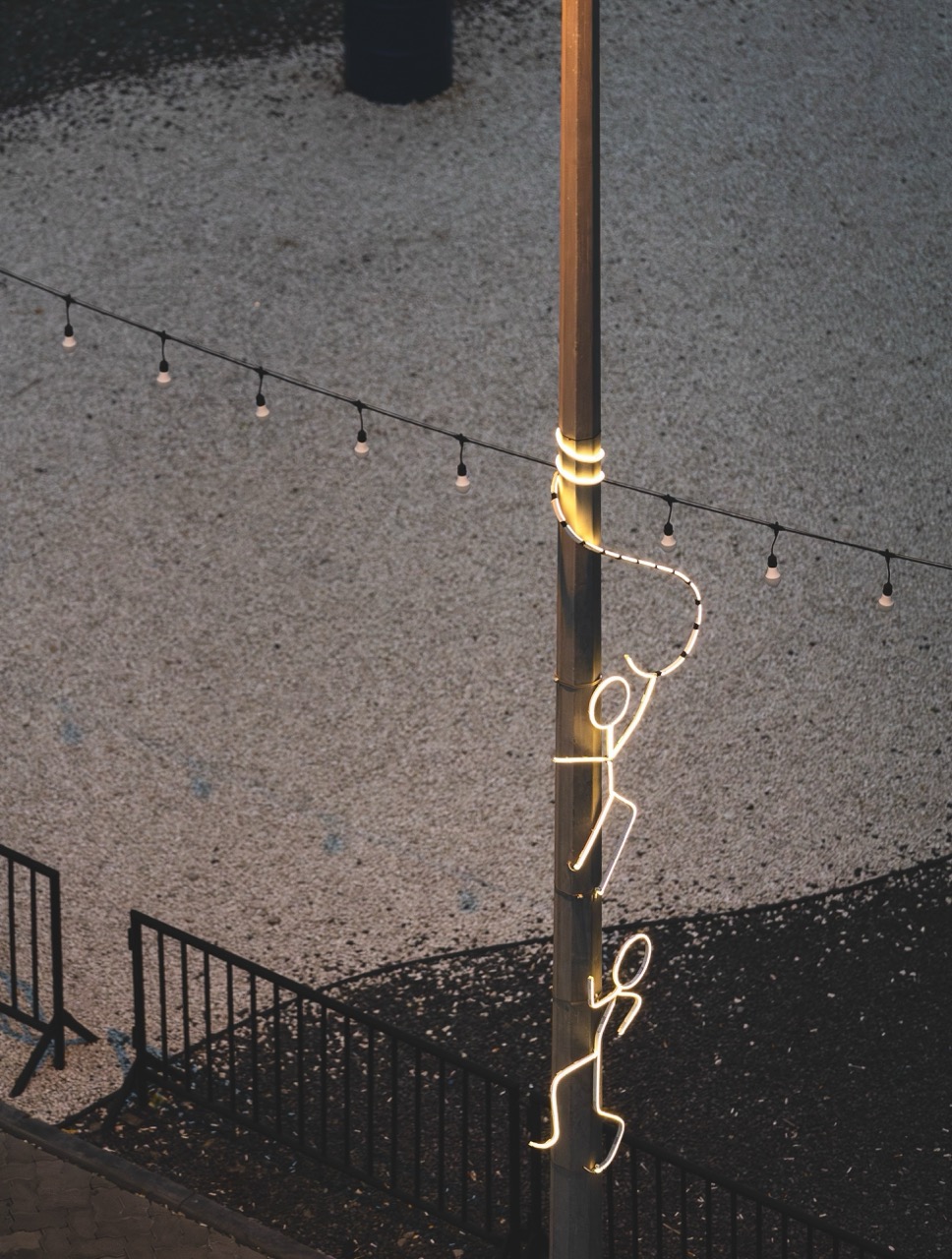
The subtle yet effective wayfinding elements include dynamic light installations featuring stick figures
“Satwa has its own character that doesn’t conform to the classical cannons of beauty. There’s lots happing with the lights, colours and structures. There is no sense of organisation, no right angles. It was daunting in the beginning, but we made peace with it and saw the beauty that lies beneath, even if it is not the polished beauty that you are used to seeing in Dubai. It has soul and energy, and our job was to preserve its authentic essence and introduce design elements that seamlessly integrate into the fabric of the neighbourhood without disrupting its unique flow.” shares Evgeniia Molchanova, Founder of E+A Studio.
The primary scope of the project was to create a safe and enjoyable walking route that encourages exploration of the neighbourhood’s lively streets, and design spaces for community engagement. Included in the first phase of the development were the roundabout, Satwa Grand Mosque, the bus terminal and adjoining streets. The E+A Studio team spent considerable time to recce the neighbourhood and speak to residents to understand their specific needs prior to embarking on the project. They also worked closely with Dubai Municipality to clean and restore the area to make it conducive for the uplift. Acknowledging the resident community’s sense of belonging and deep passion for protecting Satwa’s identity, the team also made it a point to engage the public where possible, particularly in the upkeep of green spaces.
The most challenging aspect of the project was to design functional yet aesthetic elements that would stand out in the visual clutter of the streets. Instead of competing with the loud colours and lights, the firm decided to go against the flow with sleek, minimal design features and a neutral palette with pops of colour only for the festoon-like shading elements that frame the streets. The subtle yet effective wayfinding elements include the white wavy lines on the pedestrian pathway marking the walking route, and dynamic light installations featuring stick figures and the UAE’s famous three-finger salute that not only enhance the nighttime ambiance but also reflect the neighbourhood’s ‘24-hour’ vibe.
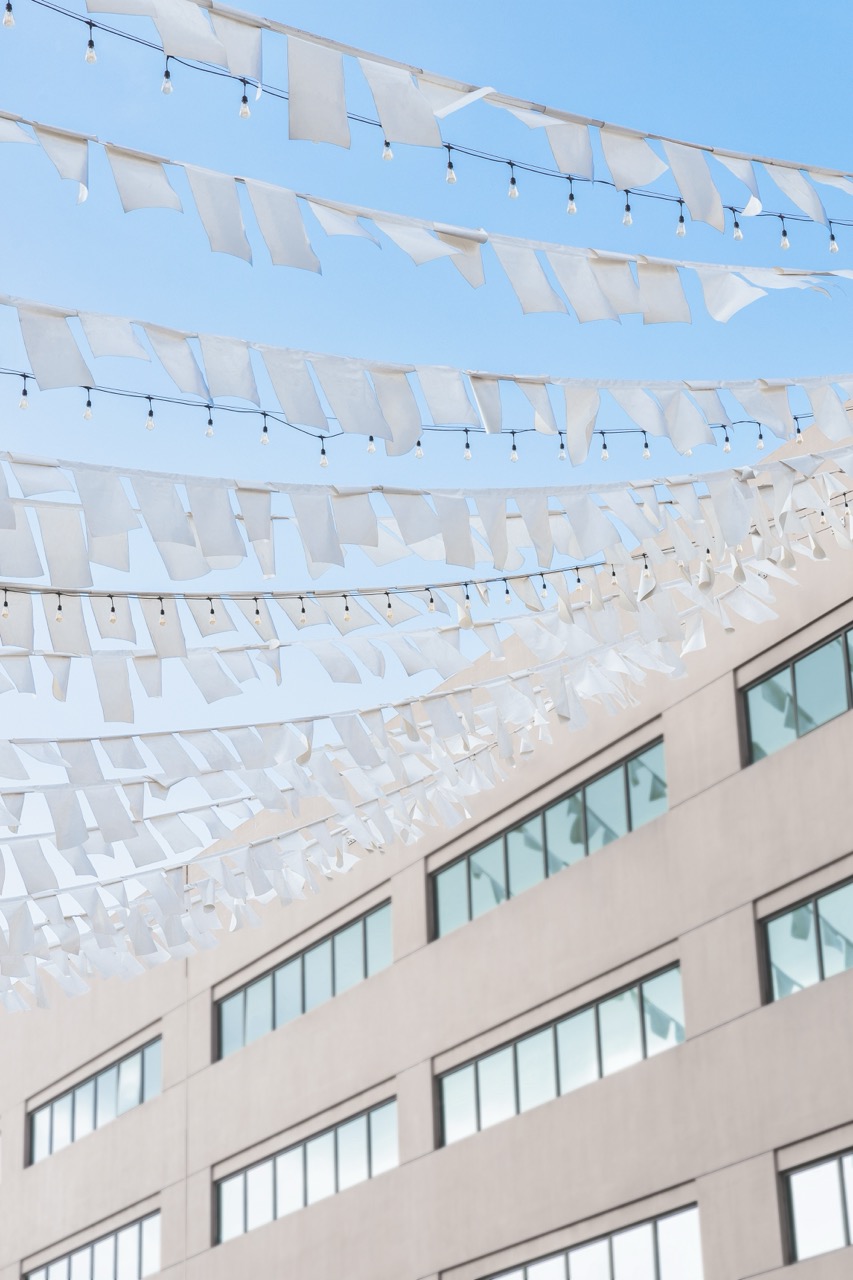
Talking about how the team arrived at the design of the wayfinding elements, Senior Urban Designer of E+A Studio, Camila Rodriguez Rey, said, “It is counterproductive to go bigger and brighter when designing for Satwa. So, we decided on bold and simple graphics that appear as if they don’t belong there. That is the only way to grab attention.” The empty plots owned by Dubai Municipality were given a makeover with grey and white gravel stone flooring and converted into public squares for pop-ups, community markets and a stage for street music – a feature requested by the Filipino community in the area who fondly refer to Satwa as ‘mini-Manila’.
Neglected public areas were transformed into mini parks with modular seating that could be easily adapted and configured to fit the irregular spaces. Fabricated by Metalfabrik using galvanised stainless steel and locally sourced stone from UAE-based Petraviva, the bespoke seating was designed by E+A Studio to be sustainable by using durable materials. Native and drought-resistant flora, well-adapted to Dubai’s harsh climate, were chosen from the Dubai Municipality nursery and used to ‘green’ the spaces. The overall result adds another layer to a neighbourhood that is changing quickly with the times.
The Latest
Past Reveals Future
Maison&Objet Paris returns from 15 to 19 January 2026 under the banner of excellence and savoir-faire
Sensory Design
Designed by Wangan Studio, this avant-garde space, dedicated to care, feels like a contemporary art gallery
Winner’s Panel with IF Hub
identity gathered for a conversation on 'The Art of Design - Curation and Storytelling'.
Building Spaces That Endure
identity hosted a panel in collaboration with GROHE.
Asterite by Roula Salamoun
Capturing a moment of natural order, Asterite gathers elemental fragments into a grounded formation.
Maison Aimée Opens Its New Flagship Showroom
The Dubai-based design house opens its new showroom at the Kia building in Al Quoz.
Crafting Heritage: David and Nicolas on Abu Dhabi’s Equestrian Spaces
Inside the philosophy, collaboration, and vision behind the Equestrian Library and Saddle Workshop.
Contemporary Sensibilities, Historical Context
Mario Tsai takes us behind the making of his iconic piece – the Pagoda
Nebras Aljoaib Unveils a Passage Between Light and Stone
Between raw stone and responsive light, Riyadh steps into a space shaped by memory and momentum.
Reviving Heritage
Qasr Bin Kadsa in Baljurashi, Al-Baha, Saudi Arabia will be restored and reimagined as a boutique heritage hotel
Alserkal x Design Miami: A Cultural Bridge for Collectible Design
Alserkal and Design Miami announce one of a kind collaboration.
Minotticucine Opens its First Luxury Kitchen Showroom in Dubai
The brand will showcase its novelties at the Purity showroom in Dubai

